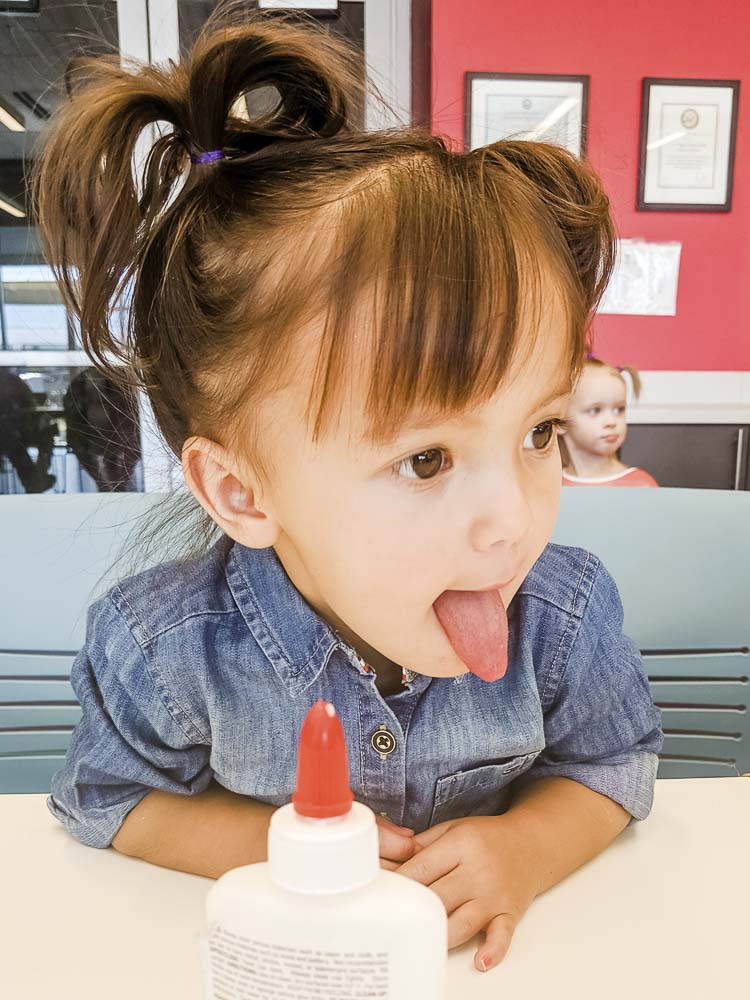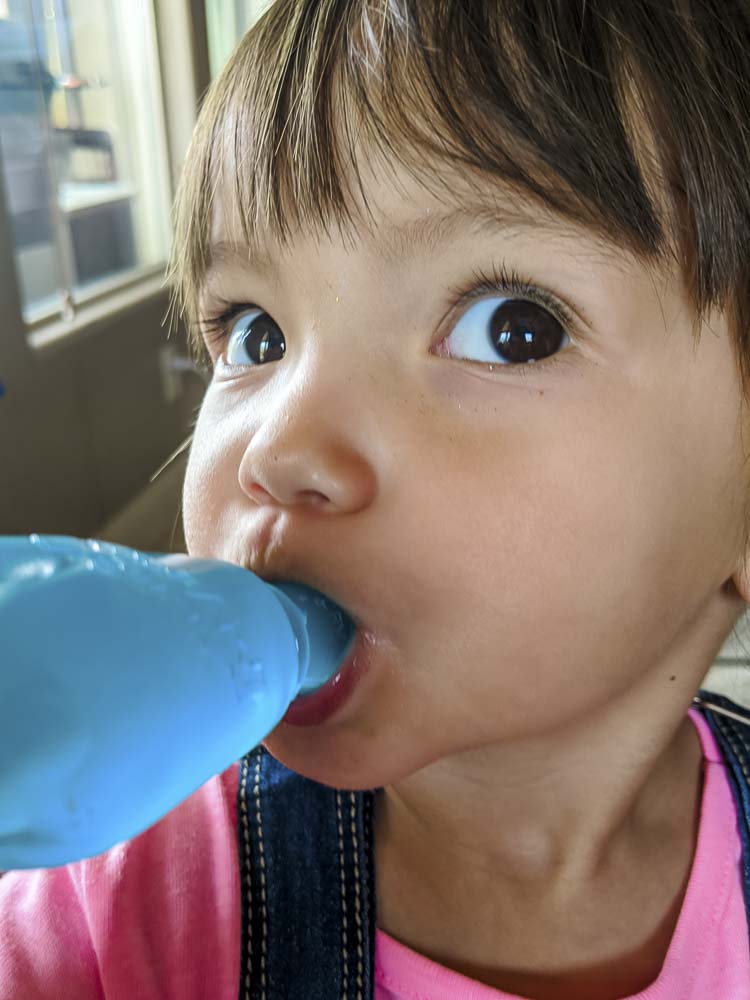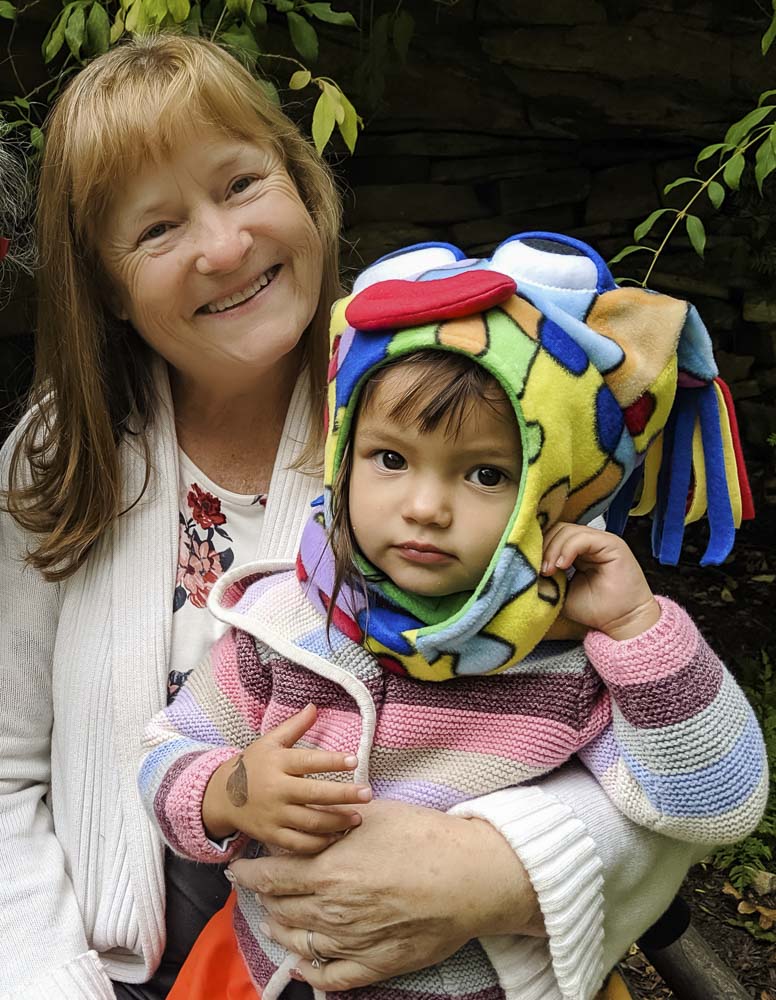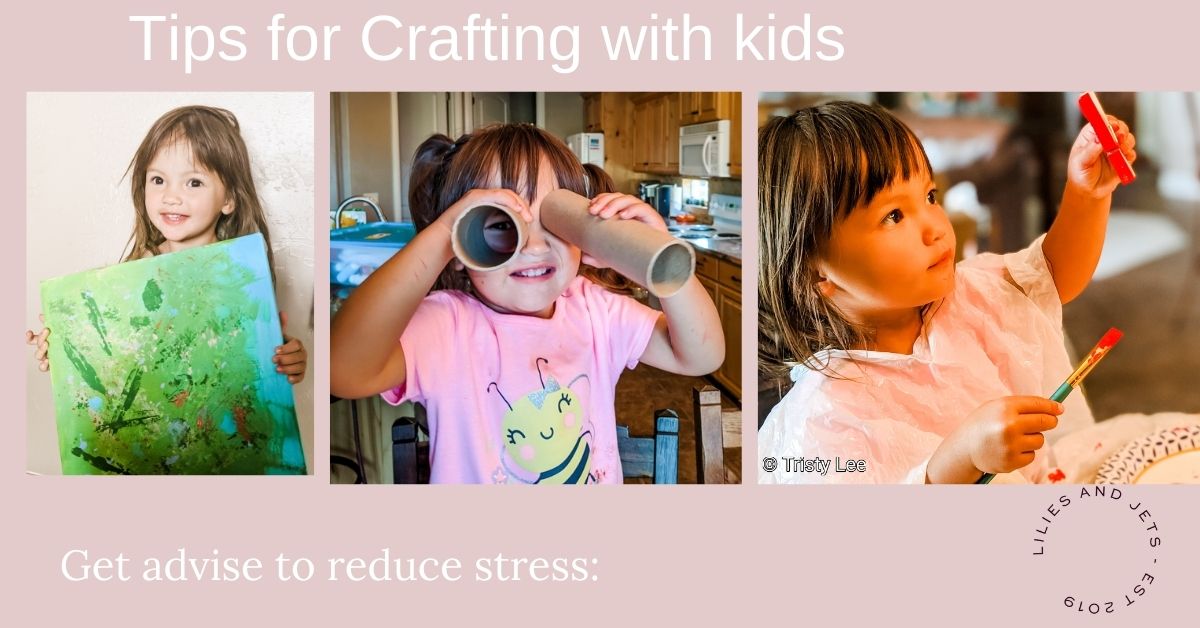Joan Atwood -Artist| Educator | Crafter | Project Inspiration
Crafting with kids can really be challenging. These are my top tips for crafting with kids. Experience with children (30 years in elementary school as a teacher) teaches you many things. Crafting with my own children and grandchildren, I can certainly give you some well-tested ideas to save you some headaches along the way to develop creativity and skills in children.

Things to consider when choosing a craft:
The age of the child is a significant consideration. A two-year-old may be capable of gluing paper with Mod Podge, but not using the scissors to cut out shapes. So, think through the skills needed before choosing a “together” project. You don’t need to rule one out just because the child doesn’t have the skills. You can do some parts, and they can do others.
1. Just make sure that your kids can do enough to keep them engaged in the project.
2. What skills are necessary?
- What experience do they have with scissors?
- Should you consider a pattern?
- Could they use some detailed instructions? For example, this is helpful for larger groups of kids.
- Do they have the coordination and fine motor skills to do the craft?
- Are they ready to try a glue gun? Start off a conversation about safety and a low-temperature glue gun.
- Have they used paints and paintbrushes? For instance, if they have no experience try some of the kid’s washable paints.
- What about wire and wire cutters?
- Grab a copy of our Tips for Crafting with Kids to think through the craft skills in advance.
Does your child have prior experience? Think about what you have done before with your child. Does this project require basic or advanced skills? Did your last project prepare them to try this one? Remember that having done a successful project will help build confidence to try another one.

Don’t expect perfection from kids
I promise that your project will not be perfect. Honestly, it is more about the journey, building confidence and togetherness than the final production.
1. You’re building cherished memories with your projects.
2. Start with an idea for the project, but leave room for creativity to blossom. Any project worth doing should be one that allows for variation and adaptation by those participating.
3. Think about colors and where you will display your project as you develop your preliminary design. You want your project to complement the room it will be displayed in; or add to the overall design, not be a distraction. It should make you and your child proud to say, “we did this.”
4. Develop a supply list and get needed supplies out beforehand to prevent having the child bored before you start.
5. Cover your workspace and your child’s clothes. Nothing is more stressful than finding out that clothes are ruined, or your lovely dining table needs to be refinished because you neglected to think about how the mess might grow beyond expectation. Do you need to take your project downstairs or outside?
Take Crafting breaks don’t rush
Be prepared for multiple breaks and distractions. Follow your child’s lead. When they say they are hungry or they seem unable to keep at it, take a break or put the next steps of the project aside till tomorrow. A child’s attention span is limited. The younger the child, the shorter the attention span. Plan ahead; can the supplies stay out for a couple of days if need be? If not, should we set up a different place to do the project?

Be patient with your kids
Don’t start a project that has to be done in 30 minutes because there is something else on the agenda. Rushed projects tend to look like that. Get an idea of how long you think it will take and then add some more time.
Let them explore and be creative
If you don’t have an exact item for the project, think about what you could substitute it with or change it to fit your space, or color, or whatever it is that isn’t quite right. You’d be surprised at what you may come up with. It may even be better than the original.
SEE MORE:
Make sure you grab your Free Guide to Project Planning. We are always working on new DIY and Home Décor projects. Follow us on Instagram for previews and behind the scenes access to all things Lilies and Jets.
About the Author

Joan Atwood has over 30 years of experience in education, working as an elementary supervisor, principal, and teacher, teaching a wide range of grade school children, as well as university classes. Her expertise includes kindergarten, elementary education, and gifted/talented. She is an artist with expertise in oil painting and floral arranging. She enjoys crafting with her grandchildren, wire wrapping pendants, and long walks in nature.


+ show Comments
- Hide Comments
add a comment